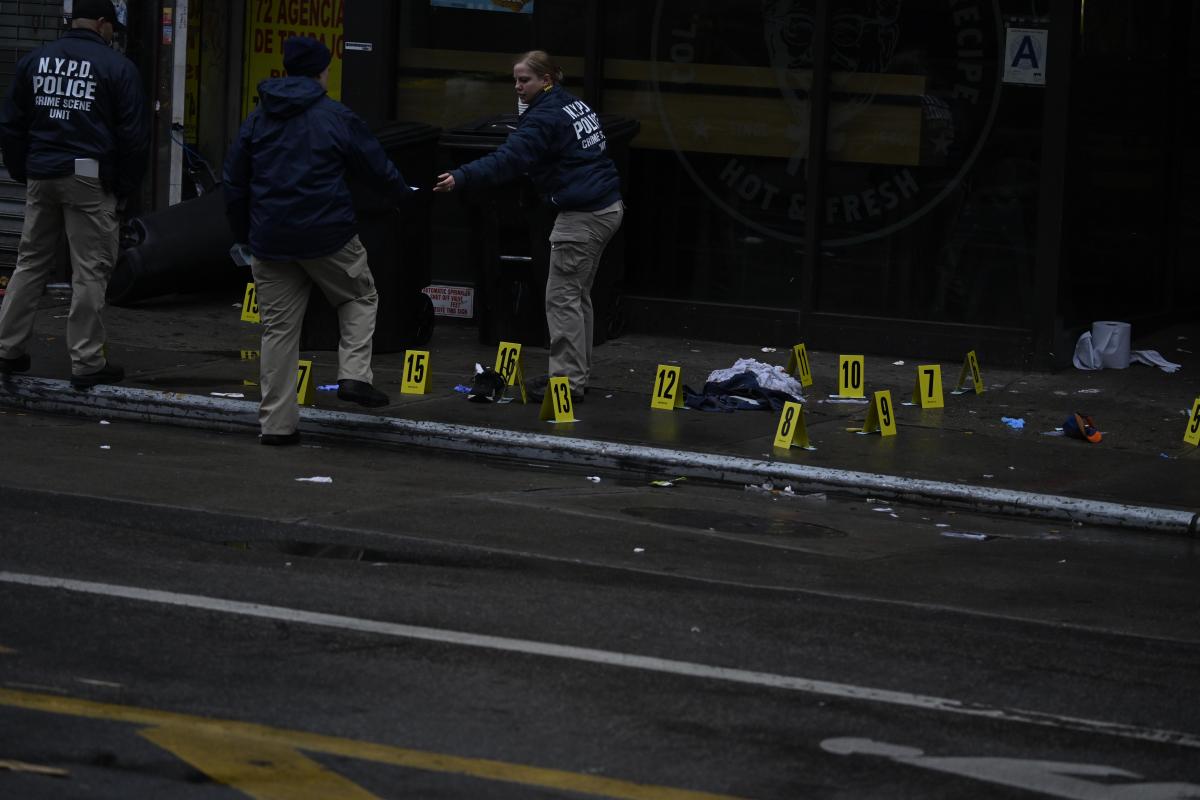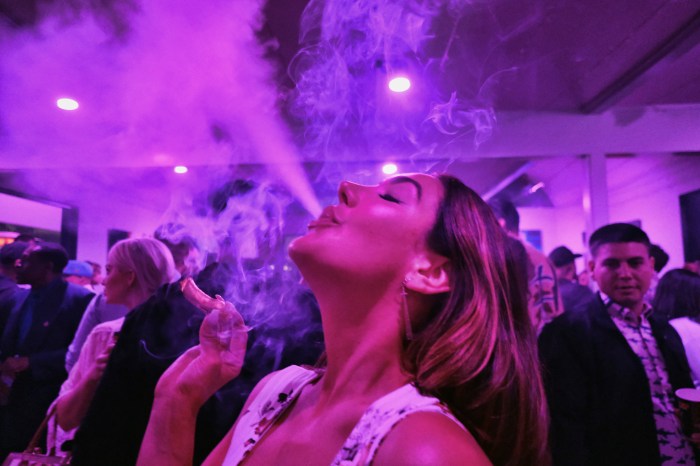By Fred Hadley
If Brooklyn is the mouth and the twin forks of the East End of the island are the fluke of Whitman's imaginary 120-mile-long king of the mammals, then surely Long Island City would be the eye, with a fixed gaze across the East River at Manhattan.
Rising some 50 stories out of this eye, like a huge harpoon, is the Citicorps Tower, and it was out of a subway exit in the base of this monolith of glass and steel that a group of 45 mostly Manhattanites emerged recently to explore the studios of seven artists in a converted factory building. Originally known as the First Ward of Queens, Long Island City was a center of manufacturing and warehouses that has been transformed into a cultural and artistic neighborhood, attracting artists in search of lower rents and proximity to the galleries and museums of Midtown.
The two-hour tour of the creative workspaces of the up-and-coming painters and sculptors was led by Hedy Kremen of the 92nd Street Y. Kremen, an art consultant who has a degree in art history and paints with acrylics, walked the group past PS 1, the art museum nee public school that recently merged with the Museum of Modern Art. After climbing six flights of stairs in a nondescript factory-loft building, the group divided into two smaller groups, the better to fit into the somewhat cramped studios of the fledgling artists.
London-born Jennifer Ross-Zuckerman's paintings show teenagers in shopping malls interacting with their peers in everyday scenes. Zuckerman first videotapes the teens candidly, using the zoom lens of her camcorder. From still frames derived from the tape, she creates realistic portraits of suburban mall rats complete with slouching posture and bored expressions.
“The candid nature of my filming process captures a moment that is real, and in so doing illuminates the increasingly blurred line between reality and representation in a culture that is accustomed to viewing and interpreting life through the lens of a recording device,” said Zuckerman, who at 28 might pass for the subject of one of her life-size murals of teenage angst.
Stepping into the windowless, black-walled studio of Ken Martinez, one is struck with the sharp contrast of the bold, primary colors that the artist uses to create poster-like images that are iconographic and that pique the curiosity of the viewer.
“I created the whole room as part of the atmosphere of the work so as to give it a theatrical setting,” Martinez said.
One work features a large, white swastika on a red background. Martinez told the group that the swastika or “fylfot” was found in many cultures, long before it was appropriated by the Nazis. “The symbol consists of four intersecting Ls that I prefer to think of as standing for life, love, liberty and luck,” he said. “I want to recapture the fylfot for us, meaning humanity, by erasing the stigma and learning its real history.”
Adina Raviv's pastel drawings and oil paintings are a celebration of human sexuality. Images of copulating couples, limbs wrapped around oversized pears, project a feeling of sexual abandon in a dream-like setting.
“My senses are constantly stimulated by people, sights, smells and sounds,” smiled Raviv, who studied art in the United States, England and her native Israel. “I am fascinated and intrigued by basic human feelings and emotional reactions.”
There is an unsettling undercurrent to her work reflected in the non-rapturous expressions on her subjects' faces and the nightmarish bondage of a naked female in a cocoon-like trap.
Roxana Alger's works fall into one of two categories: stylized depictions of smokestack-capped factories that might have been inspired by the view from her studio, and surrealistic scenes of a female nude incongruously placed in various outdoor settings.
In one painting whose angular shadows and hidden alleys are reminiscent of de Chirico, a naked woman stands on a deserted street clutching a handbag and wearing red high-heeled shoes. “The woman in my paintings is based loosely on me who generally appears nude. I place her in a variety of situations and landscapes, often in public spaces and the challenge is always in finding ways to make her and her nudity seem integral to her surroundings,” said Alger.
Anibal Rodriguez was raised in the Bronx, and his visual esthetic is shaped by the graffiti “writers,” as the practitioners of the street art prefer to call themselves. “In the Bronx, you don't get any respect as an artist unless you know how to write graffiti,” Rodriguez said. “In that way it is my native language.”
His large, colorful canvases are abstract, blending swirling forms, dripping paint, human forms and kitchen counter objects. Each feels incomplete, as if the rigid proportions of the canvas were incapable of presenting the entire piece.
Maryann King's work is about layers and patterns. On one wall of her studio, several canvases feature what appears to be the familiar shape of a slope-roofed home, only inverted. In the corner is a quilt-like collage of 64 small works that King compares with patterns found in nature like tree bark, reptile skin or microscopic studies of cells and tissues. “For me the painting experience is a relationship much like a beginning friendship. There's no predicting the dance between the original intention and completed painting,” said King.
Ki Chang Soung stood in front of his works, which consist of industrial materials that are mounted to the canvas and then painted. Soung favors rubber and semi-rubber board because of their flexibility, elasticity, consistency of form, their ability to hold detail and their capacity to hold paint.
He had studied at the Chan Gap Park Studio in Seoul, Korea where he became a teaching assistant and sculpture instructor. Visitors to his loft pass a foyer where old computer monitors are stacked. Soung has worked with video artist Nam June Paik and floats freely between the electronic, sculpture, and painting arts.
For information about the 92nd Street Y's ongoing series of walking tours, e-mail Hedy Kremen





























